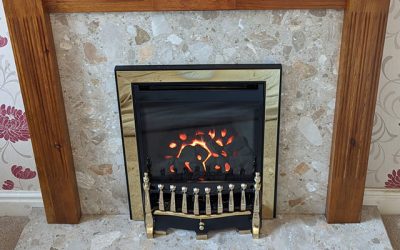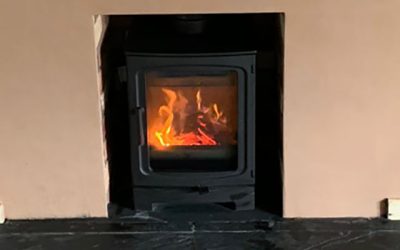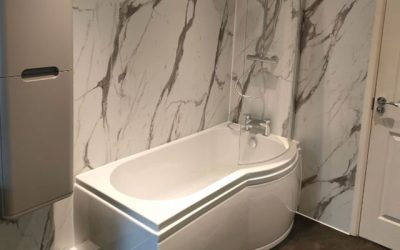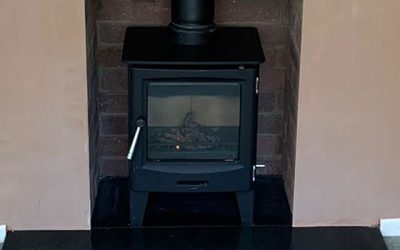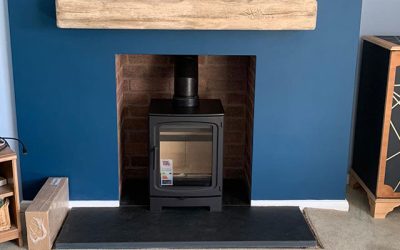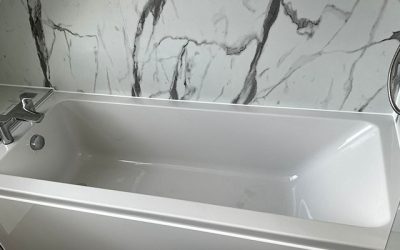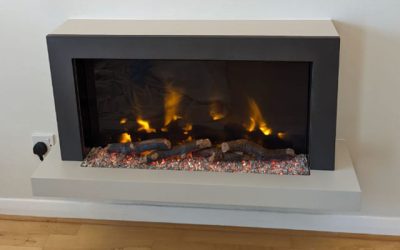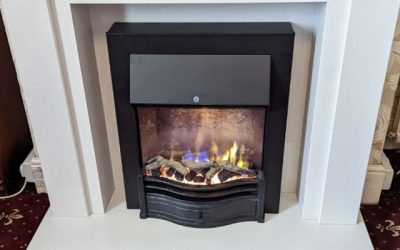Are you considering a wood burning stove? – we answer your questions!
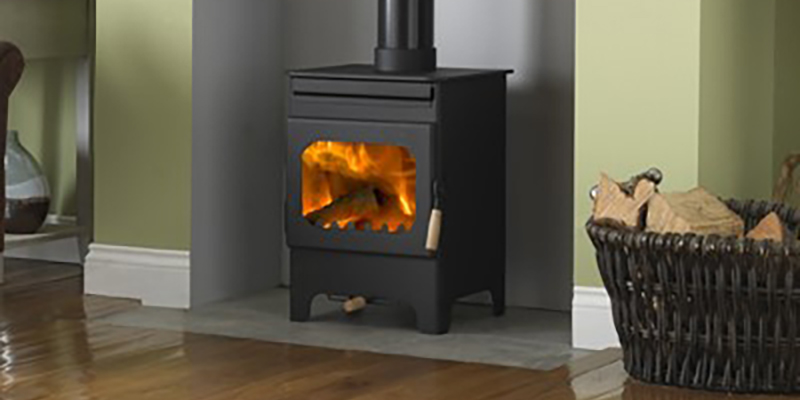
Project summary
Over 35 Years Trading
Accredited and Experienced
Happy Customers
Are you considering a wood burning stove?
A stove can be a wonderful and cosy addition to home but it is very important to understand how to choose your burner and how to care for it once it is fitted.
Why a wood burning stove?
Wood burning stoves are a great choice for your home, both aesthetically and practically. As well as adding character and warmth, stoves are energy efficient and can help you save money on your energy bills.
Wood burning stove cost
The cost of wood burning stoves varies depending on a range of factors, including the size of the stove, the type of fuel, and the needs of your property. Small simple models can be purchased for between £500 – £1,000, while more elaborate options are available for considerably more. Fitting also can vary dependent on your existing fire or fireplace and chimney. It’s a great idea to talk through your needs with our team, we are more than happy to help you to understand which type of stove is right for your home.
How to use a wood burner
To use a wood burning stove effectively and not damage it, it is important that you use your stove in a safe and efficient manner. A wood burner is not like an open fire, there are limitations on what you can burn (and how much you burn at a time!), ignoring the guidance can leave you with a very damaged stove.
Place your dry kindling wood on your fire bed. You will need to have plenty of kindling in order to create a successful fire, don’t assume you can do without it.
- Wait for the kindling to catch fire and then allow it to begin to burn.
- Leave the door slightly open, this can be a crucial point, leaving the door slightly open helps the flue pull and will help you to light the fire. It also avoids the build up of condensation on the glass.
- Add your larger pieces gradually as soon as the kindling is burning well. However, do not add full logs immediately, you need to build up the fire gradually and ensure that you do not smother it out.
- It’s important to have a log guard, as this will keep all the burning fuel inside the stove body and away from the glass.
- Keep an eye on the air flow, most wood burners have multiple ways to adjust the airflow via a control on the front of the stove. Once the fire is burning well, you can reduce the amount of airflow to prevent the wood from burning too fast. As the fire gets hotter and more established, you slow the air right down to ensure the wood burns slowly and efficiently. Slowing the air too soon could kill the fire, you’ll get the hang of it pretty quickly.
How to clean the glass
Stove glasses don’t require much maintenance to keep them in excellent condition and are generally very quick and easy to clean. One old but solid tip for cleaning the glass is to use ash from the stove on a moist cloth, dab the cloth in the fresh ash and wipe gently to clean soot from the glass.
When it comes to cleaning the outside of the wood burning stove, never use a wet or damp cloth as this can cause the metal to rust. Instead, you can use a vacuum cleaner with a soft brush attachment.
Wood burning stove regulations
In 2022, revised regulations have been put into force that mean all new wood burning stoves must restrict their carbon emissions to an agreed level. This means that although old log burners can remain operational, newer stoves must be more efficient.
All wood burning stoves must meet UK building regulations. There are specifics regarding how the flue is fitted, the size of the hearth, and the distance of the stove from combustibles. These can all affect the type of stove that is suitable for your property that is why it is vital that you should speak to a professional before purchasing.
A stove must stand on a non-combustible hearth which extending at least 225mm in front and at least 150mm at the sides. If the hearth is on a floor that is combustible, it should be at least 250mm thick. Additionally, any stove which has an output of 5kws or higher requires a permanently open vent. The regulations for having your stove installed can be more complex if your property is a listed building.
Kiln dried wood
Although wood burning is the ‘greener’ choice, burning green or fresh cut wood isn’t. The moisture content of freshly chopped wood can account for up to 67% the weight of the wood. This high moisture content means more energy is used to evaporate the moisture before the wood generates any heat. This essentially means you need to burn more than twice the amount of logs to get the same amount of heat. It could also damage your stove.
Also burning properly dried wood, such as local kiln dried firewood, gives off less smoke emissions meaning cleaner, greener fuel.
Can you burn coal in a wood burning stove?
The clue is in the name. Wood burning stoves are designed to be used with wood, never coal. The issue is in the design: stoves for burning wood have a flat plate. This is because wood only requires air from above in order to burn. Coal needs to be burned on a raised grate as it needs to source air from above, as well as an ash escape route.
Any kind of wood can be burned on your stove, but it is essential to only burn seasoned and clean wood. This is wood that is at least a year old and has been allowed to dry out properly. Ensure the wood you are burning is not only seasoned but free of varnish, paint, nails, staples etc. Aside from being a cause of expensive damage to your stove it could also harm your health.
Burning wet or damp wood will significantly reduce the efficiency and turn the cleanest burning stove into one which produces excessive soot and smoke.
When you add an unseasoned or wet piece of fuelwood to your fire, the water contained in the wood heats up and turns to steam, which mixes with the exhaust gases and extinguishes the secondary burn. Regardless of how sophisticated your baffle system is, this cuts your heat output by up to 50% and results in cool, water-laden exhaust filled with unburned particles and exhaust gases. This wet, heavy, high-density smoke travels very slowly up the chimney, where it cools even further, condensing onto the walls of the flue and causing excessive creosote formation.
So, when you burn unseasoned or wet wood, you dramatically DECREASE your heat output, while dramatically INCREASING the likelihood of chimney fires.
Another drawback to burning wet or unseasoned wood is creosote formation on the viewing window. No matter how good the air wash design that keeps the window clean, it won’t work when the firebox is full of wet smoke. A blackened viewing window is one of the most reliable indicators that the fuelwood is improperly seasoned.
Can you have a wood burning stove with no chimney?
Whilst it is possible to have a wood burning stove installed if you do not have a chimney, it will require a little extra work to carry it out safely. You can have a flue installed in your property in order to use your wood burning stove. These systems are inexpensive and can be installed through the roof or on the outside of the building depending on a number of factors. This therefore means you can still have a wood burner even if you do not have a chimney.
Below are some simple safety tips to ensure you are getting the best from your Stove:
Do:
- Do ONLY use quality clean, dry hard wood, or smokeless fuel. Kiln dried wood is great.
- Do check your wood is less than 20% moisture inside the log when split. Use a moisture meter.
- Do get the flue or chimney swept and checked at least annually.
- Do always use a fireguard for children and the infirm.
- Do use the stove gloves and tools provided as needed.
- Do open the top air control (air wash) to help keep the glass clean.
- Do warm up the stove fully on the first loads of fuel before reducing the air controls to a lower position.
- Do keep your stove clean inside & out.
- Do purchase and use a CO alarm.
Don’t:
- Don’t leave the stove unattended with the air controls wide open.
- Don’t over fire your stove by overloading with fuel or leaving the air controls too far open for too long as it will damage it.
- Don’t throw wood into the burner – sharp impacts can cause damage to your firebricks.
- Don’t let any metal part of the stove glow red hot, this is over firing and will damage your stove!
- Don’t be concerned about a small amount of haze or smoke coming off the stove at first, this is paint curing and any remaining protective oil film evaporating off. Simply ventilate well until it wears off.
- Don’t cover or remove your Carbon Monoxide (CO) alarm from the room, it is there for your protection.
- Don’t burn rubbish, painted or preserved wood in your stove, it can cause damage, excessive smoke and is illegal.
- Don’t close the stove air controls down too quickly before the chimney and stove have properly warmed up, it can stifle the fire and cause smoke and tar build up.
- Don’t store logs or coal right next to your stove – they can overheat!
- Never burn unseasoned, wet or treated wood in your stove.
See more of our projects by Simon Turner
Tips for deep cleaning your bathroom
It’s a chore that few of us enjoy but deep cleaning your bathroom can prevent illnesses and infections as well as making it a more pleasant place to be generally!
Installation of the Durlston Balanced flue gas fire
A lovely installation of the Durlston Balanced flue gas fire with the brass and black trim and fret.
The installation of the Capital Fireplaces Woodrow 5kw Stove
The installation of the Capital Fireplaces Woodrow 5kw stove surrounded by the rainbow brick chambers in the aperture creates a beauty of a focal point.
New Bathroom fitting completed to the highest standard
Beautiful, elegant, and completed to the highest standard… There is no question why our customer has been left with nothing but complimentary comments about our company, the workmanship, and their new and improved bathroom.
Cast Tec Horizon 5 multifuel stove installation
The installation of the Cast Tec Horizon 5 multifuel stove completed by our HETAS engineer looks fantastic in the recess with the Capital rustic brick chambers.
Capital Fireplaces Woodrow Burner
The Capital Fireplaces Woodrow burner looks perfectly suited to the space and design of the chimney breast.
New and improved bathroom designed & fitted
There is no question why our customer has been left with nothing but complimentary comments about our company, the workmanship, and their new and improved bathroom.
Installation of the Elgin and Hall Huxton
A lovely installation of the Elgin and Hall Huxton electric suite.
The Dimplex Dumfries in black
The Dimplex Dumfries in black with the spacer lights up beautifully to create a feeling of warmth.


